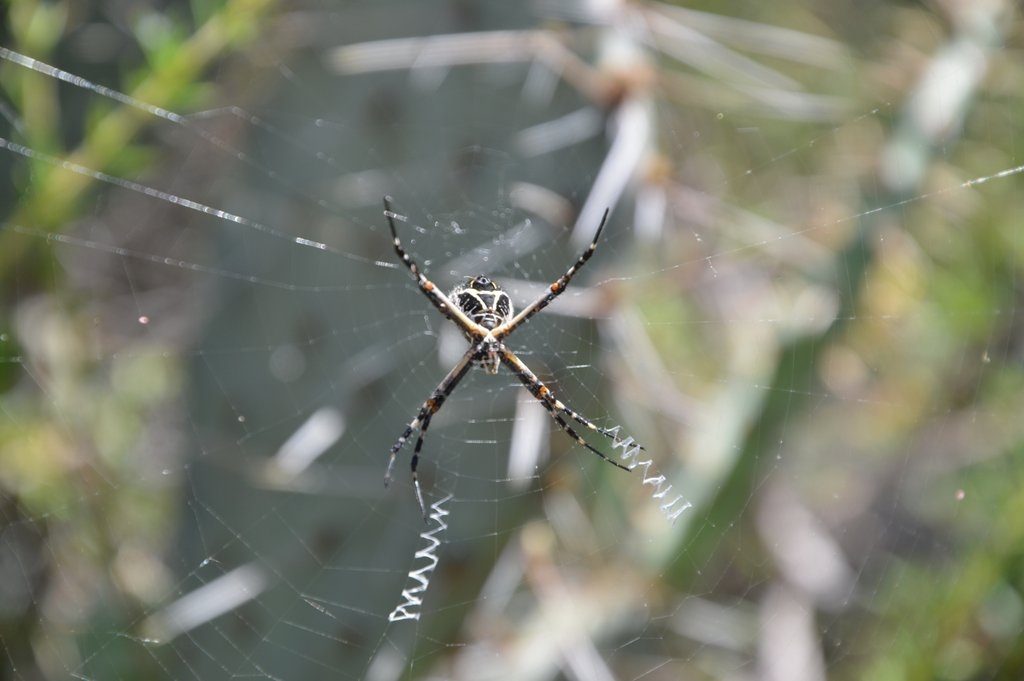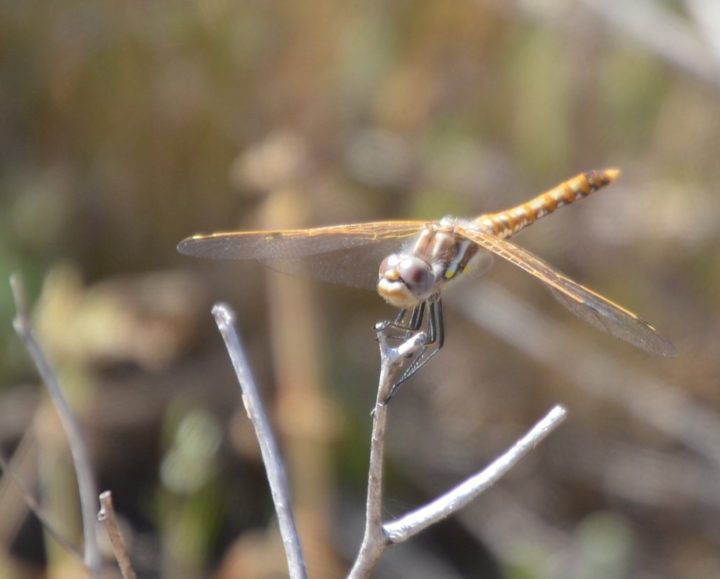Early spring is the best time to hike in San Diego. The plants put on a floral show that would put any florist out of business if it lasted year round. It won’t last long. The winter rains give way to dry air and the dry air gives way to the summer heat that turns the natural world brown.
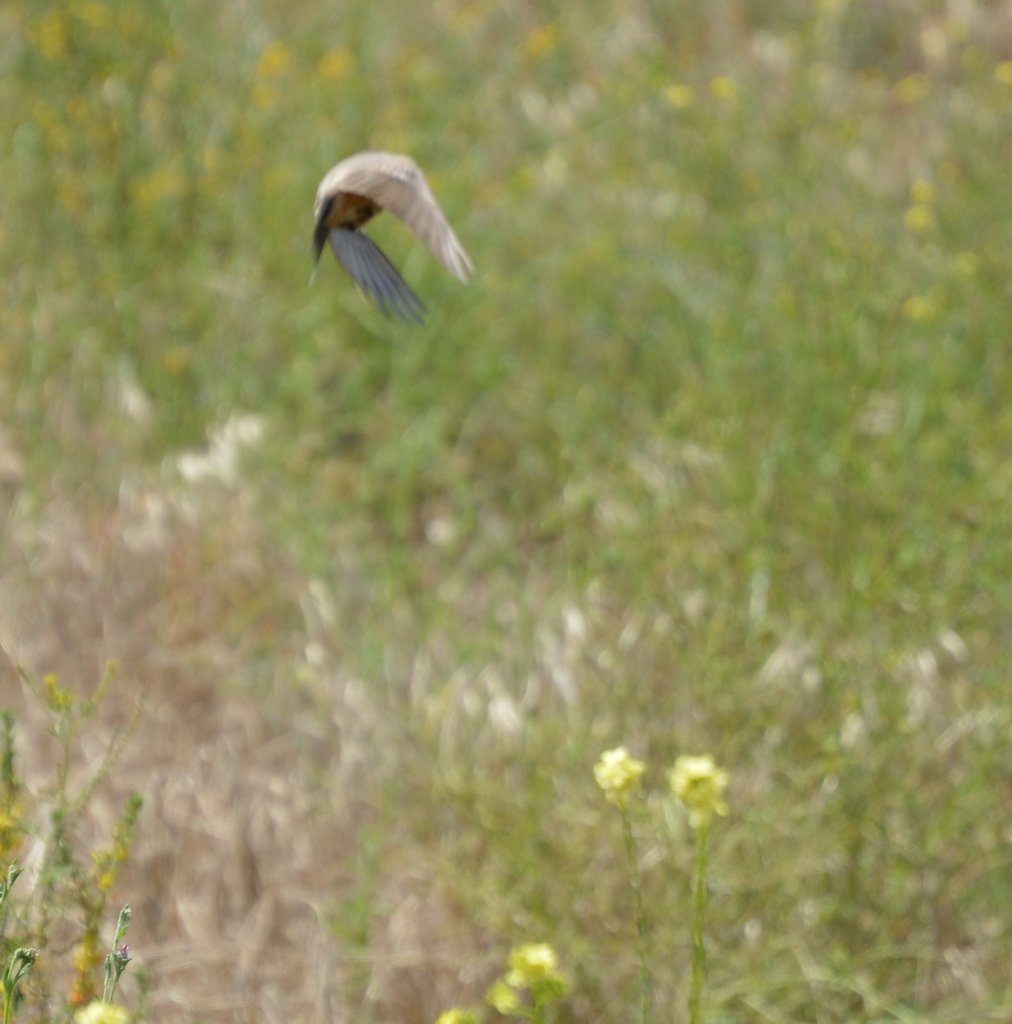
But before they go, I want you meet a few of them that I happened to meet on a nowhere piece of land next to the I-5 in San Diego. It pleases me to introduce to you:
Star thistles (Centaurea solstitialis) grow in batches in disturbed soils, not unusual for an invasive species. Their nasty thorns still pliable but watch out, when they dry out, you don’t want to walk through a batch of those nasty plants. Deerweed (Acmispon glaber (previously Lotus scoparius)), a small easy to miss bush, displays its tiny yellow flowers many of them fringed red.
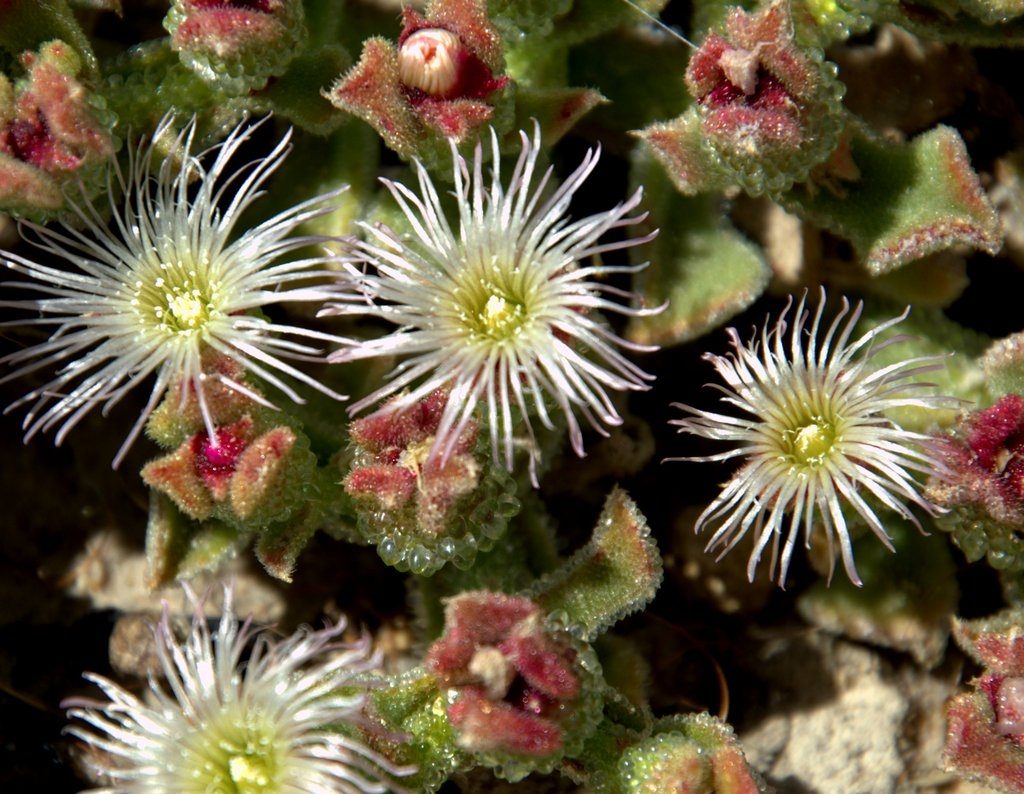 Ice plants (Mesembryanthemum nodiflorum) attract hoards of bees to their white flowers that glisten at their base with water storing cells that have an icy appearance to them. Storksbill (Erodium cicutarium), aptly named from the shape of its capsule, litters the landscape. The suncup (Chylismia brevipes), the very short version of a primrose, hide on the edge of the trail and under the edge of bushes.
Ice plants (Mesembryanthemum nodiflorum) attract hoards of bees to their white flowers that glisten at their base with water storing cells that have an icy appearance to them. Storksbill (Erodium cicutarium), aptly named from the shape of its capsule, litters the landscape. The suncup (Chylismia brevipes), the very short version of a primrose, hide on the edge of the trail and under the edge of bushes.
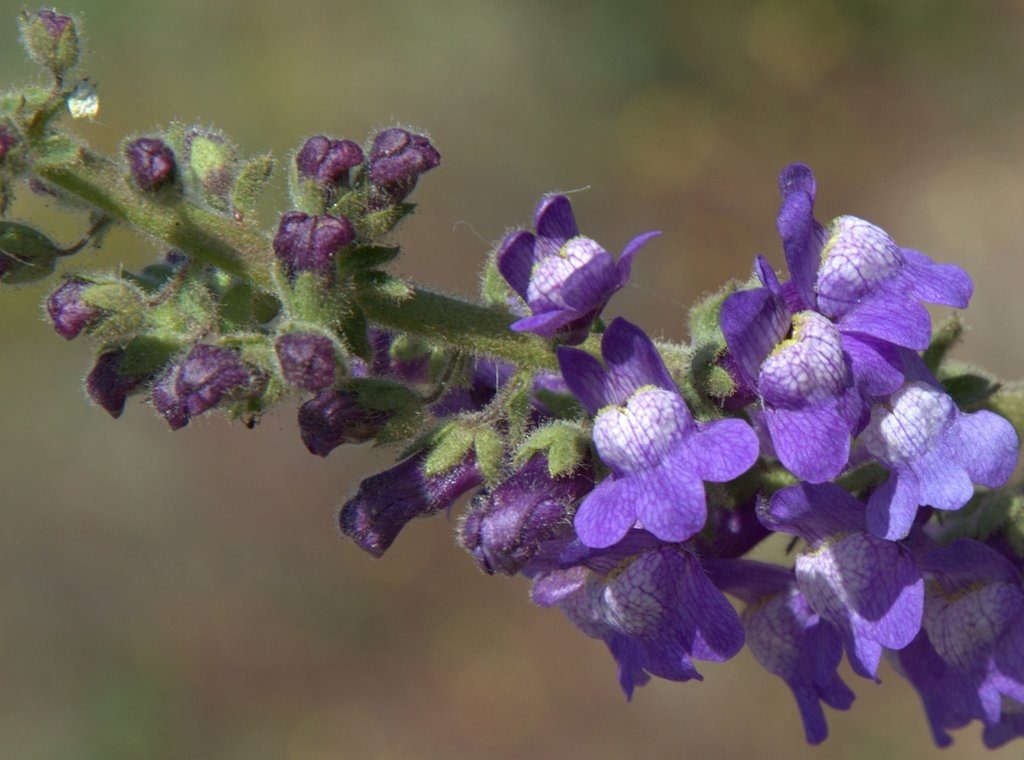
The violet snapdragons (Antirrhinum nuttallianum), flowers stacked like little faces on a totem pole, look out over the trail waiting for entertainment.
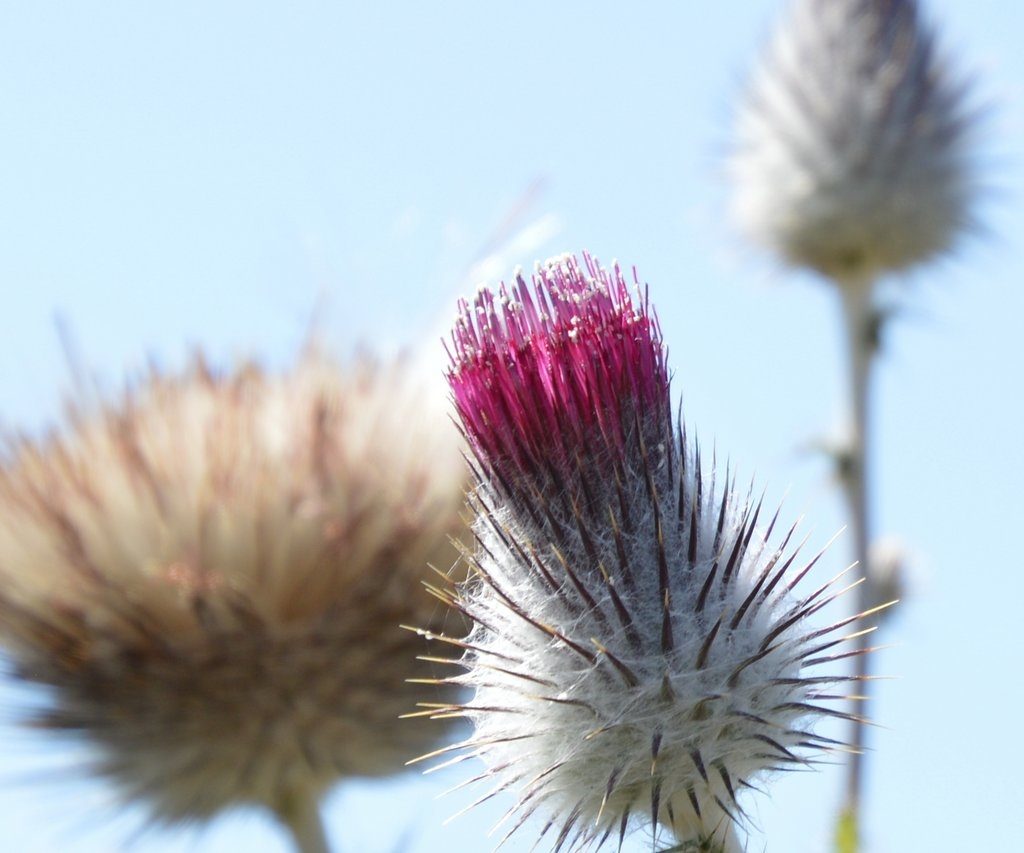
Cobweb thistles (Cirsium occidentale) stretch above the weeds, its iridescent red flowers encased in a thorny trap hidden in its own spidery web. Blue elderberry trees (Sambucus nigra) ready their berries for a tasty snack. Lemonade Berry (Rhus integrifolia) offers its sugary lemon tasting seeds, like a lemon turned inside out. Red monkey flowers (Mimulus aurantiacus) brighten the bush providing nice balance with the yellows, whites, and greens of other plants. The poorly named “Blue dicks” (Dichelostemma capitatum) show a crown of blue flowers on a long wire-thin stem, the name presumably coming from a shortening of its latin name, and not referring to a phallic looks or bad attitude. The white flowered cryptantha (genus cryptantha) look like little rice grains stuck to green scorpion tail curled stems.
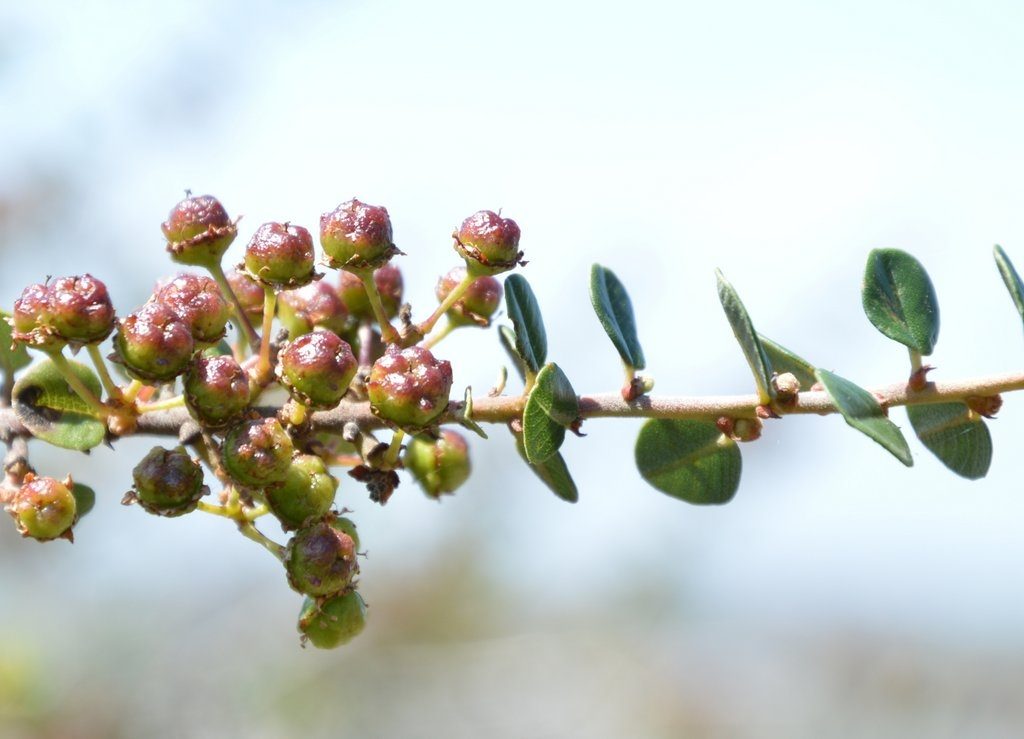 The rhino-size warty stemmed ceanothus (Ceanothus verrucosus) hides its little misshapen green and red berries.
The rhino-size warty stemmed ceanothus (Ceanothus verrucosus) hides its little misshapen green and red berries.
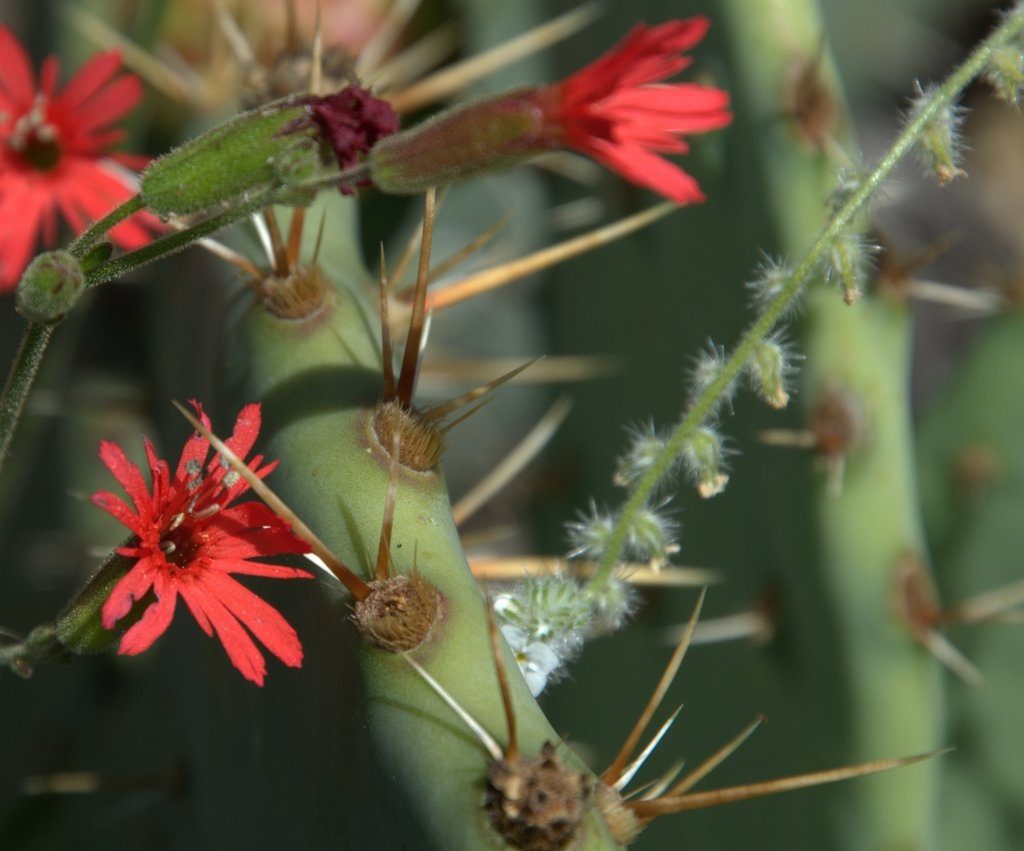 Indian pinks (Silene laciniata) poke out their showy red flowers with their fringed edges between the pads of a prickly pear cactus.
Indian pinks (Silene laciniata) poke out their showy red flowers with their fringed edges between the pads of a prickly pear cactus.
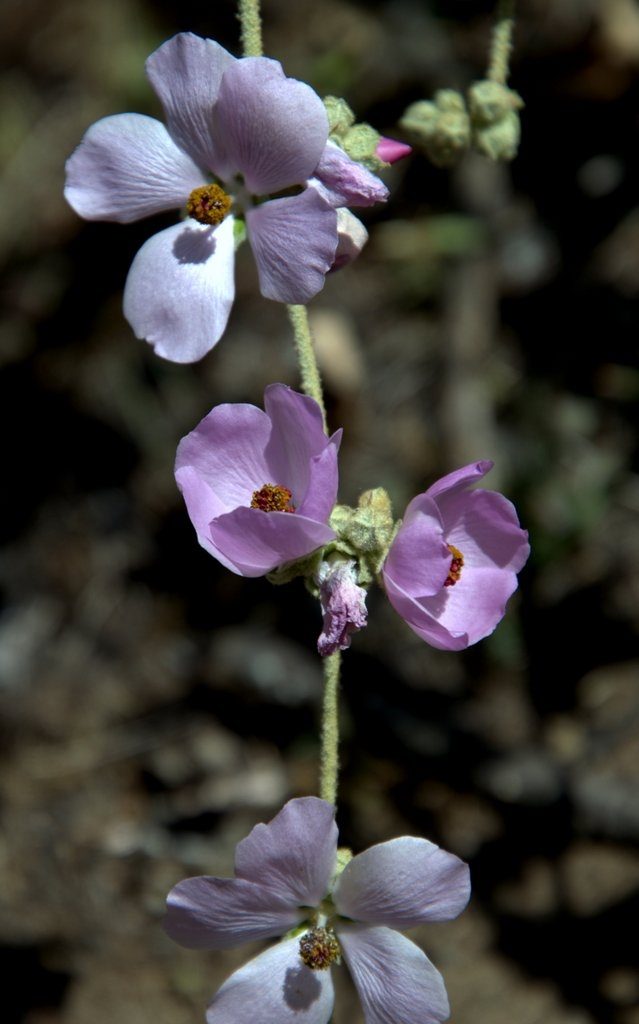 The bush mallow’s (Malacothamnus densiflorus) delicate pink flowers look like fragile china bowls with their own flower arrangement inside. A leafy daisy (Erigeron foliosus) competes for attention contrasting its light purple ray flowers with its bright yellow disc flowers. Rugged chamise’s (Adenostoma fasciculatum) white flowers point to the sky like a person checking white gloves for dust.
The bush mallow’s (Malacothamnus densiflorus) delicate pink flowers look like fragile china bowls with their own flower arrangement inside. A leafy daisy (Erigeron foliosus) competes for attention contrasting its light purple ray flowers with its bright yellow disc flowers. Rugged chamise’s (Adenostoma fasciculatum) white flowers point to the sky like a person checking white gloves for dust.
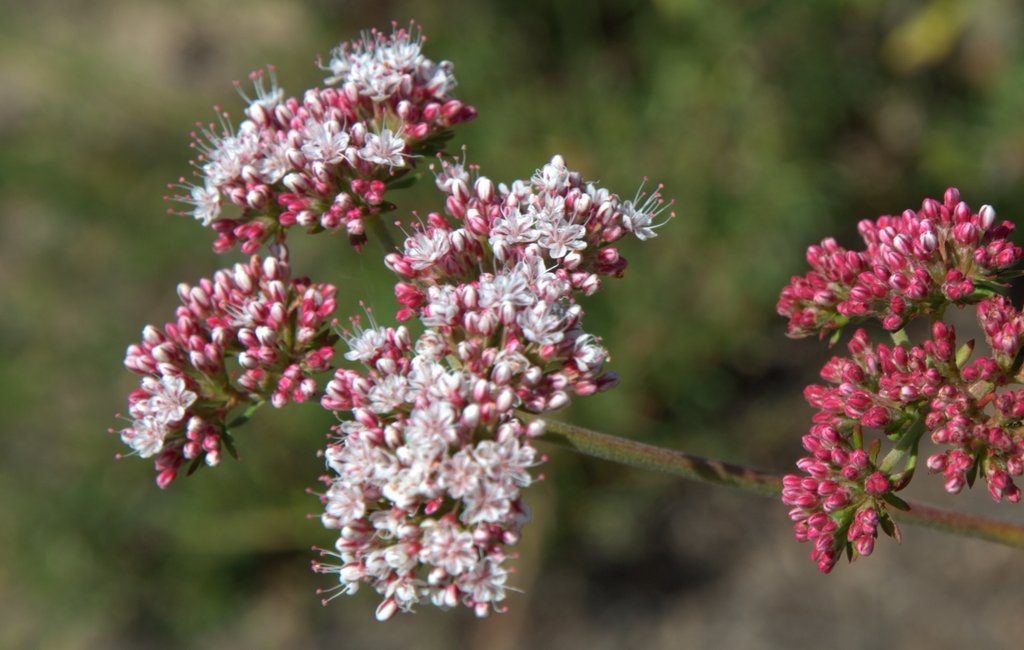 The flat-topped buckwheat (Eriogonum fasciculatum) flowers only begin to bloom not quite open yet, the flowers will start white but then end up as rust like a weathered piece of iron.
The flat-topped buckwheat (Eriogonum fasciculatum) flowers only begin to bloom not quite open yet, the flowers will start white but then end up as rust like a weathered piece of iron.
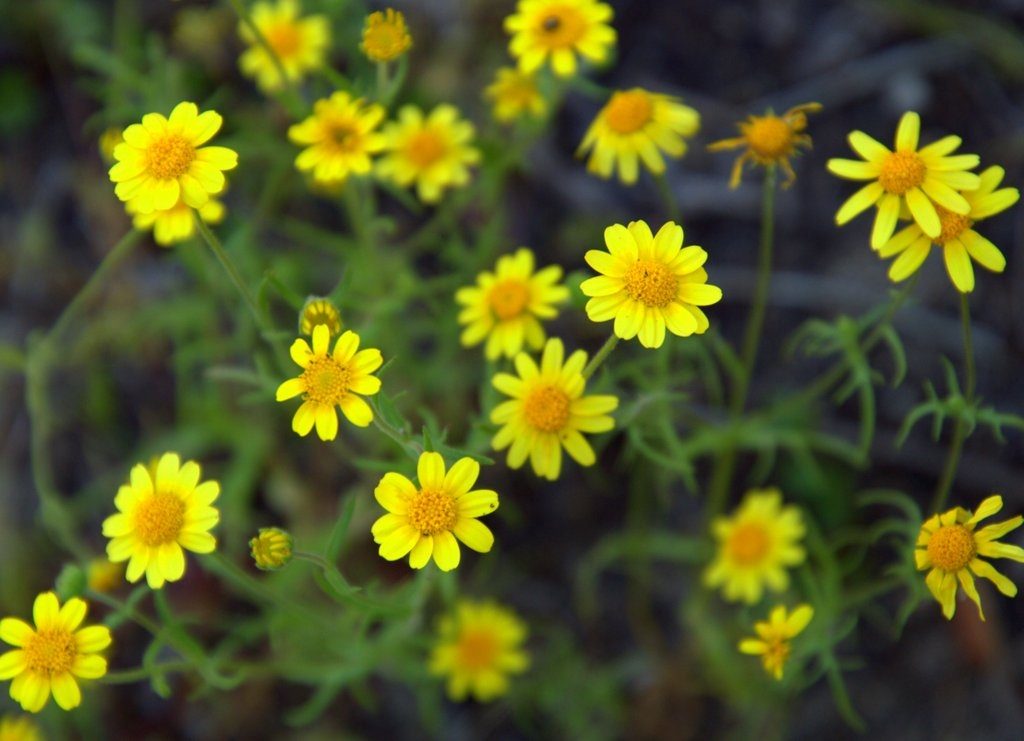 A cluster of goldfields (Lasthenia coronaria) look like a bouquet fit for red wine and fine dining tables.
A cluster of goldfields (Lasthenia coronaria) look like a bouquet fit for red wine and fine dining tables.
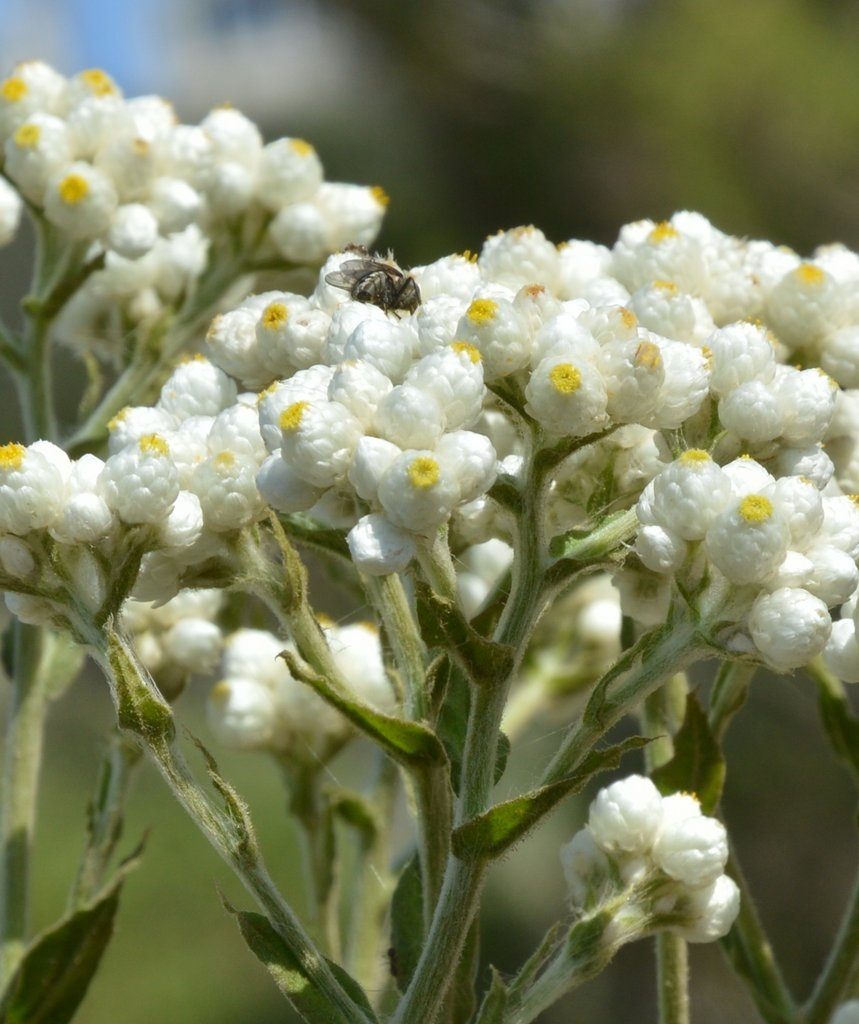 Cudweed (Pseudognaphalium californicum) looks like a bouquet of cigarettes until the flowers expand looking like a tar-stained eye wearily watching. Dudleya (Dudleya lanceolata) bloom late, so for now, the nascent flowers hide inside their green garbanzo bean shaped capsules.
Cudweed (Pseudognaphalium californicum) looks like a bouquet of cigarettes until the flowers expand looking like a tar-stained eye wearily watching. Dudleya (Dudleya lanceolata) bloom late, so for now, the nascent flowers hide inside their green garbanzo bean shaped capsules.
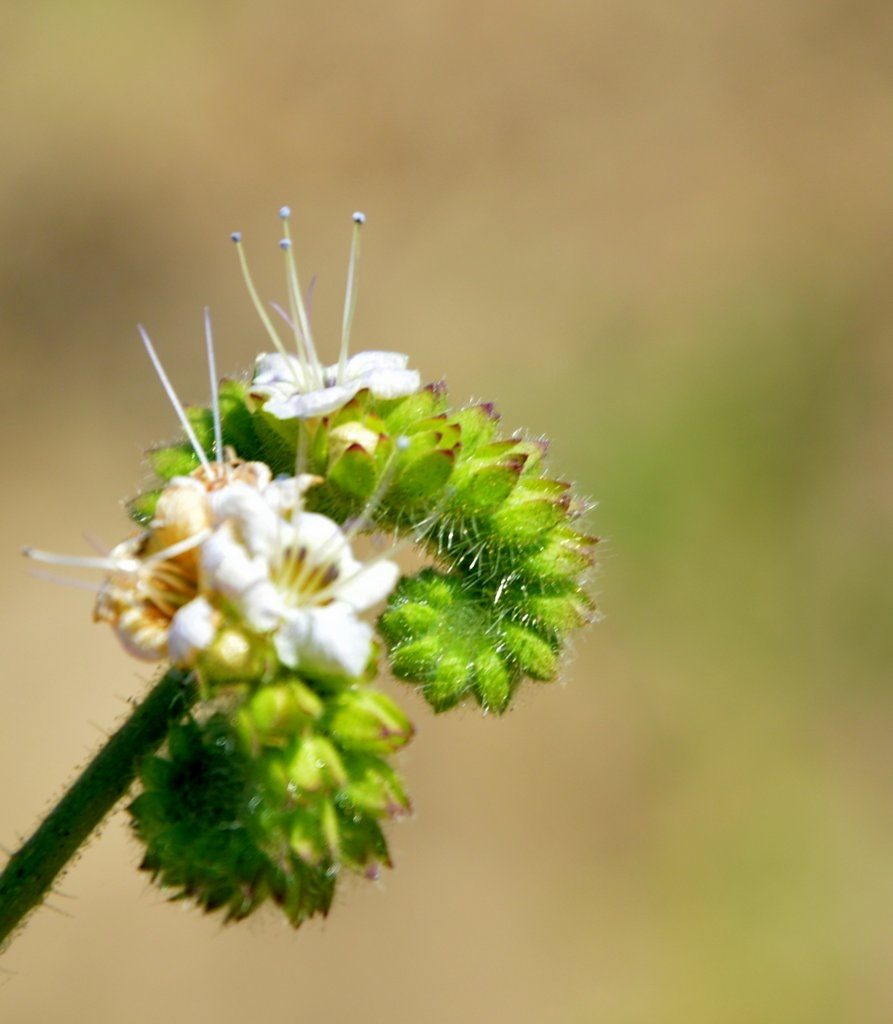 Phacelia (phacelia distans) flowers mimic little green caterpillar heads adorned with a white flower bouquet and their tails tucked in humility.
Phacelia (phacelia distans) flowers mimic little green caterpillar heads adorned with a white flower bouquet and their tails tucked in humility.
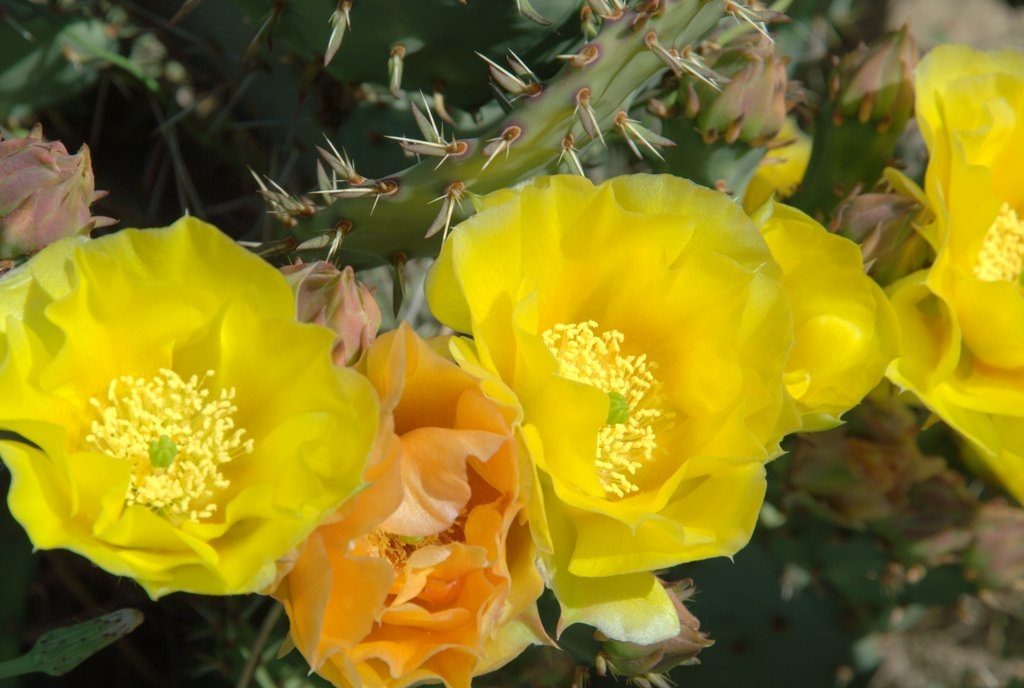 A prickly pear (Opuntia xvaseyi) seductively show beautiful arrangements of yellow and orange flowers enticing me to risk their prickly daggers. A mat of spiney fringe flowers (Chorizanthe fimbriata) blend with reddish dirt on the ground.
A prickly pear (Opuntia xvaseyi) seductively show beautiful arrangements of yellow and orange flowers enticing me to risk their prickly daggers. A mat of spiney fringe flowers (Chorizanthe fimbriata) blend with reddish dirt on the ground.
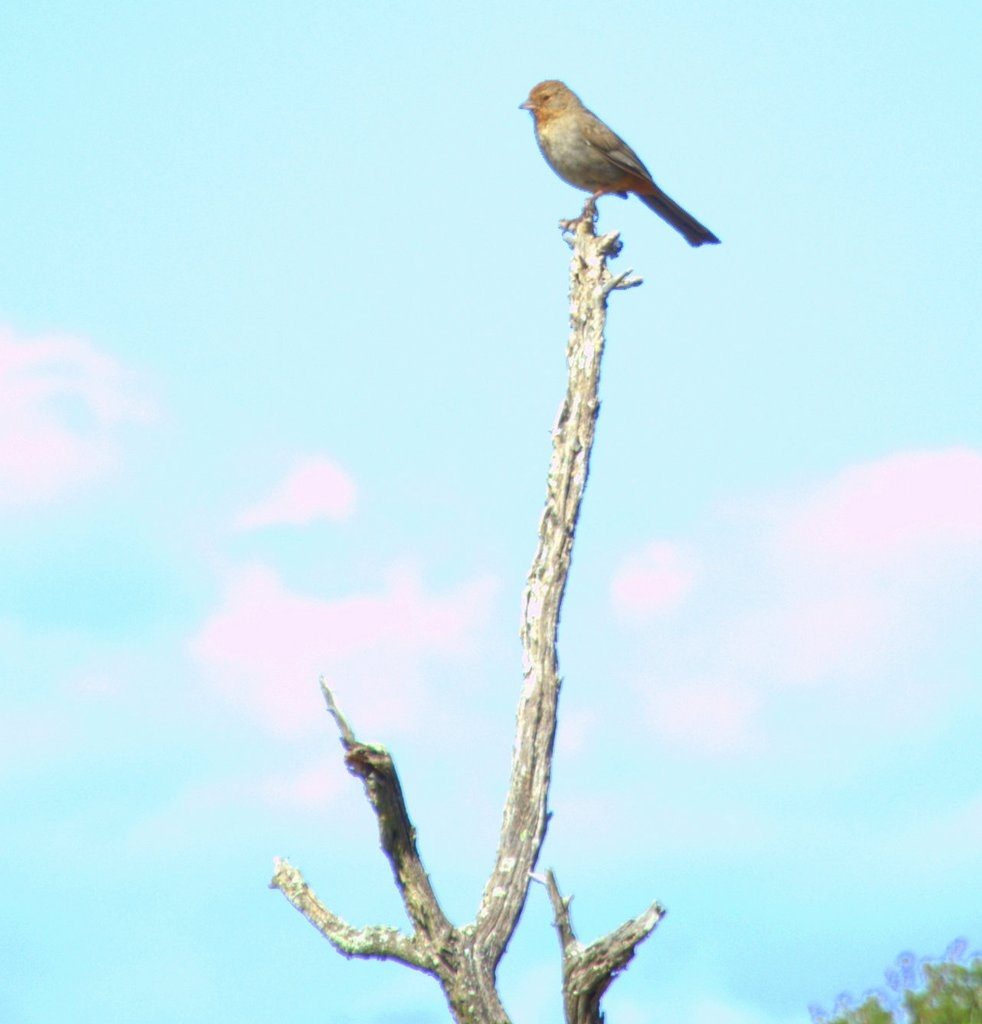
Credits
Centaurea solstitialis – Star Thistle of Mediterranean Basin region
Acmispon glaber – Deerweed of Southern CA
Mesembryanthemum nodiflorum – Ice Plant of Southern Africa
Erodium cicutarium – Storkbill of Mediterranean Basin region
Chylismia brevipes – Suncup of Southwest American Desert
Antirrhinum nuttallianum – Snapdragon of Southern CA and Baja CA
Cirsium occidentale – Cobweb thistle of Western CA
Sambucus nigra – Blue Elderberry of most of Europe
Rhus integrifolia – Lemonade Berry of Southern CA and Baja CA
Mimulus aurantiacus – Red Monkey flowers of Southwestern North America
Dichelostemma capitatum – Blue dics of Southwestern North America
Cryptantha – white flowered cryptantha of Western North America
Ceanothus verrucosus – Warty stemmed Ceanothus of Southern CA and Baja CA
Silene laciniata – Indian Pinks of Southwestern North America
Malacothamnus densiflorus – Bush Mallow of Southern CA and Baja CA
Erigeron foliosus – leafy daisy of Western United States
Adenostoma fasciculatum – Chamise of Western North America
Eriogonum fasciculatum – Buckwheat of Southwestern North America
Lasthenia coronaria – Goldfields of CA and Baja CA
Pseudognaphalium californicum – Cudweed of CA
Dudleya lanceolata – Dudleya of Southern CA and Baja CA
Phacelia distans – Common Phacelia of western North America
Opuntia xvaseyi – Prickly Pear of CA
Chorizanthe fimbriata – spiney fringe flowers of CA
